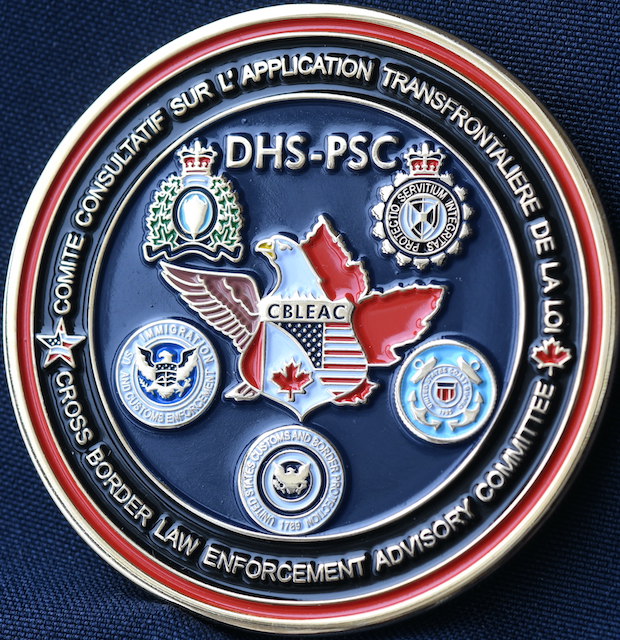Cross-Border Law Enforcement: Improving Mechanisms To Fight Crime

Table of Contents
Cross-border law enforcement refers to the collaborative efforts of law enforcement agencies from different countries to investigate and prosecute crimes that transcend national borders. Its importance cannot be overstated; transnational crime thrives on jurisdictional gaps and the lack of seamless information sharing. Effective cross-border law enforcement is essential to disrupting criminal networks, bringing perpetrators to justice, and protecting vulnerable populations worldwide.
Enhanced Information Sharing and Intelligence Collaboration
Timely and effective information sharing is the bedrock of successful cross-border law enforcement. Intelligence gathered in one country can be crucial to investigations in another, allowing law enforcement agencies to connect seemingly disparate incidents and build stronger cases against transnational criminal organizations. However, several challenges hinder this crucial process:
- Data Privacy Concerns: Differing data protection laws and regulations can create significant obstacles to information sharing.
- Differing Legal Frameworks: Variations in legal frameworks and investigative procedures can complicate cross-border investigations.
- Language Barriers: Difficulties in translating information and communicating effectively across linguistic divides can significantly delay investigations.
To overcome these hurdles, several solutions are necessary:
- Establish Secure, Standardized Data-Sharing Platforms: Creating secure, encrypted platforms that adhere to international data protection standards will facilitate efficient information exchange.
- Develop Joint Training Programs for Law Enforcement Agencies: Training programs focusing on international investigative techniques, data analysis, and cross-cultural communication will enhance collaboration.
- Harmonize Legal Frameworks Regarding Data Privacy and Cross-Border Investigations: International cooperation on data privacy legislation and harmonizing legal procedures for cross-border investigations is vital.
Strengthening Judicial Cooperation and Extradition Processes
Streamlined extradition procedures and robust mutual legal assistance treaties are critical for bringing transnational criminals to justice. However, the extradition process often encounters significant bottlenecks:
- Political Obstacles: Political considerations can sometimes impede extradition requests.
- Lengthy Legal Procedures: Complex legal procedures and bureaucratic hurdles can significantly delay the extradition process.
- Differing Legal Systems: Discrepancies between legal systems can complicate the process of transferring evidence and ensuring fair trials.
To improve judicial cooperation, we need to:
- Modernize Extradition Treaties: Simplifying extradition procedures and reducing bureaucratic hurdles will expedite the process.
- Establish Dedicated Judicial Liaison Officers: Dedicated liaison officers can facilitate communication and cooperation between judicial authorities in different countries.
- Promote Capacity Building and Training for Judicial Personnel: Training programs focusing on international law, extradition procedures, and cross-cultural communication will enhance the effectiveness of judicial cooperation.
Addressing Cybercrime and Digital Forensics in Cross-Border Contexts
Cybercrime presents a unique challenge to cross-border law enforcement. The digital nature of these crimes often makes it difficult to determine jurisdiction, trace perpetrators, and gather admissible evidence. Challenges include:
- Jurisdictional Issues: Determining which country has jurisdiction over a cybercrime can be complex, especially when the crime involves multiple countries.
- Technical Complexities: Investigating cybercrimes requires specialized technical expertise and advanced digital forensics capabilities.
- Lack of Resources: Many law enforcement agencies lack the resources and expertise needed to effectively investigate cybercrimes.
Effective solutions require:
- Develop International Agreements on Cybercrime Jurisdiction and Evidence Admissibility: Clear guidelines on jurisdiction and evidence admissibility are crucial for effective cross-border investigations.
- Invest in Advanced Digital Forensics Capabilities and Training for Law Enforcement: Investing in advanced technology and training will equip law enforcement with the necessary skills to investigate cybercrimes effectively.
- Promote Collaboration Between Cybersecurity Experts and Law Enforcement Agencies: Close collaboration between cybersecurity professionals and law enforcement is crucial for sharing expertise and developing effective strategies.
Combating Specific Transnational Crimes Through Collaborative Efforts
Transnational organized crime manifests in various forms, each presenting unique challenges. Drug trafficking, human trafficking, and money laundering are particularly devastating. Combating these requires targeted strategies:
- Drug Trafficking: Joint task forces focusing on disrupting drug trafficking routes and dismantling drug cartels are crucial.
- Human Trafficking: Strengthening border control measures, improving intelligence gathering, and collaborating on victim protection are essential.
- Money Laundering: Implementing robust asset recovery mechanisms to seize criminal proceeds is vital to disrupting these networks.
Successful examples of cross-border cooperation exist, demonstrating the effectiveness of joint task forces and information sharing in dismantling major criminal organizations. These successes highlight the potential for further progress through collaborative efforts.
Conclusion: The Future of Cross-Border Law Enforcement
Improving cross-border law enforcement requires a multifaceted approach addressing information sharing, judicial cooperation, cybersecurity, and targeted strategies against specific crimes. The challenges are significant, but the potential rewards – a safer, more secure world – are immeasurable. Continued investment in technology, training, and legal frameworks is essential to building strong, effective international partnerships. We must foster a global commitment to strengthening international cooperation and sharing intelligence to effectively combat transnational crime. We urge readers to actively engage in discussions about improving cross-border law enforcement strategies and support initiatives that promote international cooperation in the fight against crime. Let's work together to build a more secure future through enhanced global efforts against transnational crime.

Featured Posts
-
 Save 17 On Doom The Dark Ages Now
May 13, 2025
Save 17 On Doom The Dark Ages Now
May 13, 2025 -
 Salman Khans Forgotten Film A R2 Crore Flop And Its Lasting Impact
May 13, 2025
Salman Khans Forgotten Film A R2 Crore Flop And Its Lasting Impact
May 13, 2025 -
 Ali Larter On Angelas Evolution Reverse Engineering The Trophy Wife In Season 2
May 13, 2025
Ali Larter On Angelas Evolution Reverse Engineering The Trophy Wife In Season 2
May 13, 2025 -
 Nba Draft Lottery Odds Predicting The Toronto Raptors Pick With Cooper Flagg In Mind
May 13, 2025
Nba Draft Lottery Odds Predicting The Toronto Raptors Pick With Cooper Flagg In Mind
May 13, 2025 -
 Chaos In Worcester As Ice Arrest Ignites Public Protest
May 13, 2025
Chaos In Worcester As Ice Arrest Ignites Public Protest
May 13, 2025
